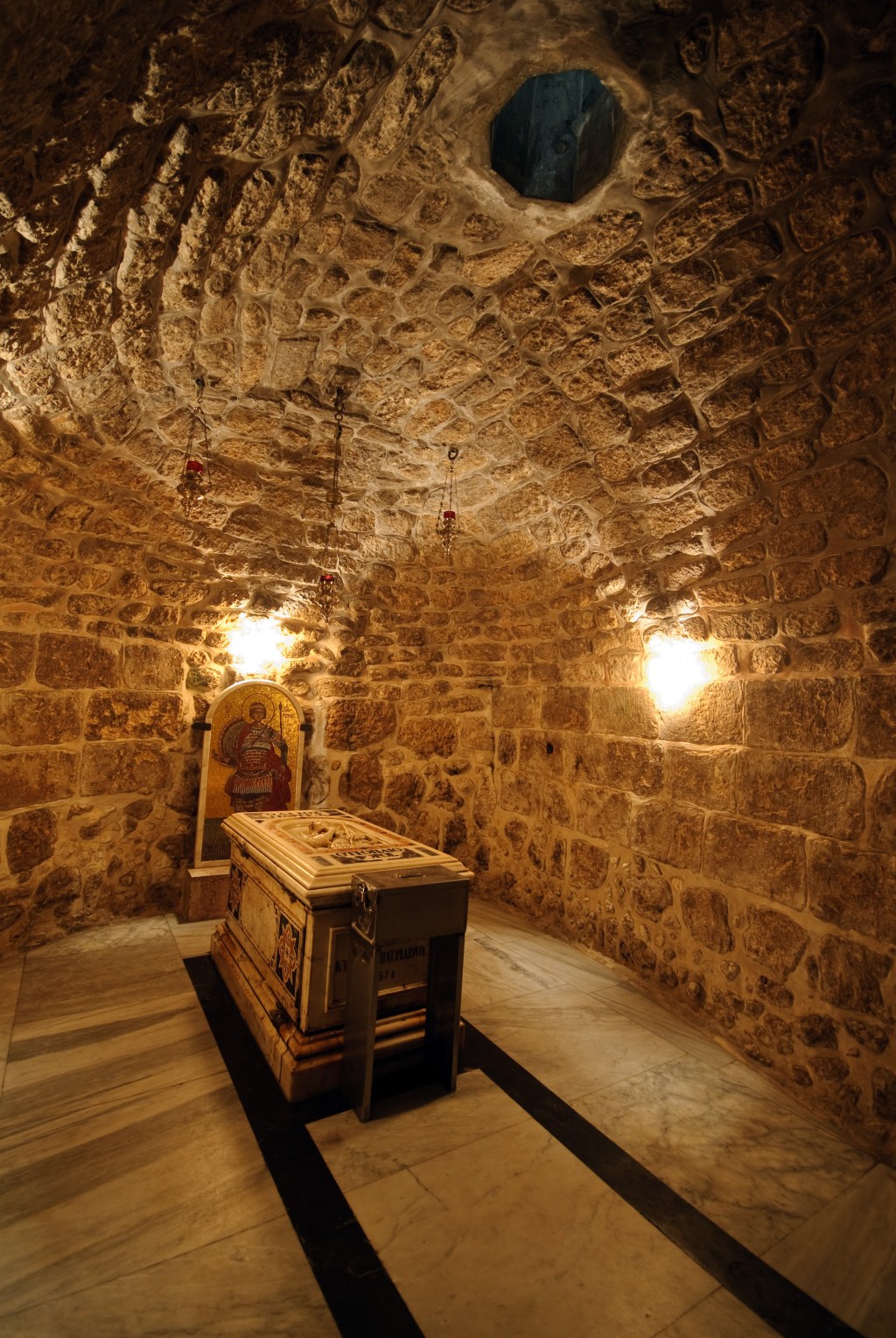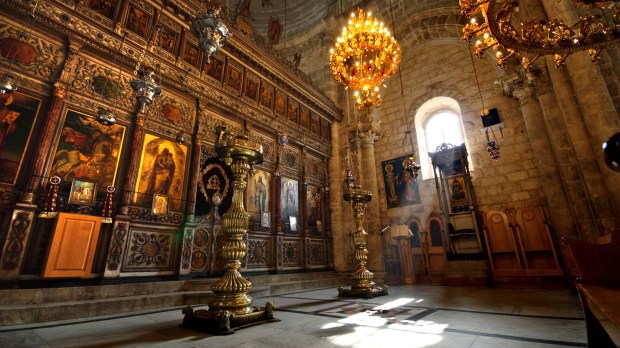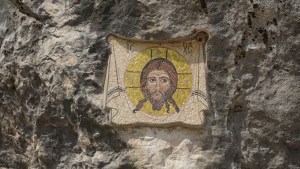Acheiropoieta are literally icons not made by any human hand. Far from implying these images are the product of a contemporary image-generating AI software, an acheiropoieton is a type of icon (or any other kind of religious image, mostly two-dimensional) believed to have been miraculously created by supernatural means or by divine intervention – that is, without the use of human hands. The word itself is made from the Greek prefix a (meaning “not”) preceding the word cheiropoietos, meaning “handmade.” The image of the Virgin at Lod (Israel) is (or was), tradition claims, one of these.
The image of the Virgin at Lod was a legendary Christian relic that was said to have miraculous properties. According to Middle-Eastern Christian traditions, the image was created when the Virgin Mary visited the town of Lod, Israel, during her lifetime, and left an imprint of her image on a stone –very much like the Image of Edessa or Veronica’s Veil, in Jesus’ case.
The stone was then used to build a church, which soon became a site of pilgrimage for Christians from all over the world. Some even claim the church was built by Peter and John themselves, and that they used the miraculously imprinted stone as the cornerstone of the church. Some claim the image appeared on its own on a column of the church after the apostles finished building it.

Be that as it may, the image itself has not been preserved, although a small, round stone with an imprint of the Virgin’s face and hands is housed in a chapel at the Church of St. George, in Lod. This image has been commonly said to be the original Marian acheiropoieton, and thus local legends claim this is the church that tradition says Peter and John built, although historical records make it clear it was erected in the 5th century, in the early Byzantine era.
The Church of St. George remains a popular site of pilgrimage, yet not only because of its alleged miraculous and apostolic origins, but also because it houses the (alleged) tomb of St. George, the dragon-slaying saint.
The tomb, nevertheless, is empty, as the relics of the saint were spread all over the Christian world when the Sassanids took over the place in 614.



